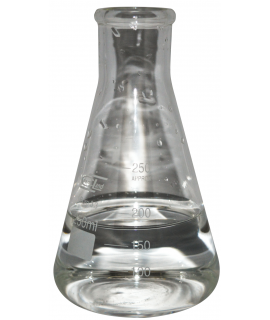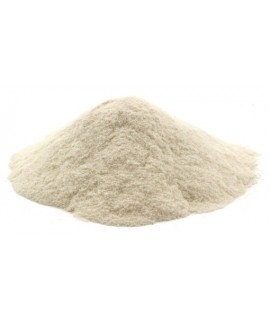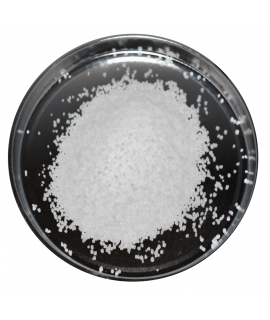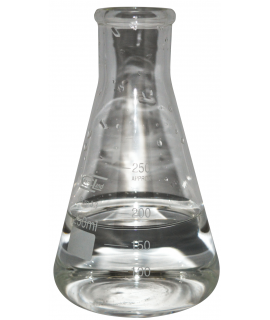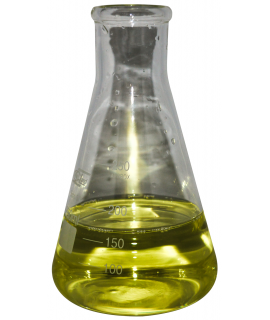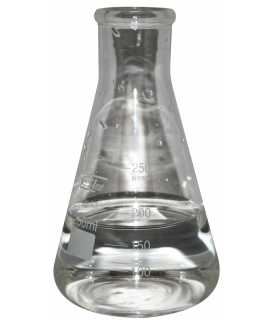IRON EDTA 99%, Fe-13%, kg
5.30 €
Iron disodium EDTA, CAS 15708-41-5, disodium iron edetate, iron disodium ethylenediaminetetraacetate, iron chelate, organic iron
Parameters | Feature |
Iron sodium EDTA | Ferrous sodium EDTA, ferric edetate sodium, ferric sodium ethylenediaminetetraacetate, ferric chelate, organic iron |
Formula | C10H12N2NaO8Fe |
Structure |
|
IUPAC | Iron(3+) sodium 2-({2-bis(carboksilatometil)amino]etil} (carboksilatometil) amino)acetatas |
INCI | - |
CAS | 15708-41-5 |
Molar mass | 344,057 g/mol |
Density | 0,80-1,00 g/cm3 (20 °C) bulk |
Solubility | 400g/L 20oC in water |
Fe EDTA 13% is the most widely used source of iron deficiency prevention worldwide. It is a very pure, water-soluble iron chelate and can therefore be used for foliar fertilisation and/or as an NPK ingredient. EDTA (ethylenediaminetetraacetic acid) protects its chelating nutrients within a limited pH range (pH 4-6.5).
In agriculture and horticulture, the use of iron EDTA in fertiliser applications reduces fertiliser consumption significantly to achieve the same effect. As the compound is organic, the iron it contains is unaffected by other substances in the environment, so that it reaches the plant. This avoids over-fertilisation, requires considerably less material and gives maximum effect. Iron EDTA avoids serious consequences for yield and quality. Its chelated form of EDTA allows a rapid and systematic action to optimise the photosynthetic functioning of the plant. Iron chelated EDTA is often used for foliar fertilisation because it does not burn the leaves. Its high level of chelation ensures a high availability of iron and optimum efficacy at the leaf and root level. It guarantees a rapid greening effect due to its highly absorbable form. It can be used as a prophylactic or therapeutic preparation as soon as symptoms appear. Iron is essential for the enzyme system of plant metabolism (photosynthesis, respiration and protein development). It is necessary for the reduction of nitrates and sulphates, and is important for photosynthesis and chlorophyll maintenance in plants. The soluble iron powder chelate, which can be used in organic farming, has been specially developed to prevent and treat iron deficiency, which is frequent and exacerbated by climatic events. This deficiency causes iron chlorosis, which is characterised by internal yellowing of young leaves to the point of discolouration.
When fertilising into the soil | ||
Plant | Amount, (kg/ha) | Fertilisation time |
All plants sensitive to iron deficiency | 4,0-8,0 | Fertilise before sowing, transplanting or at the beginning of the growing season. |
Strawberries | 5,0-10,0 | Fertilise before transplanting or early in the growing season. |
Spraying through leaves | ||
Plant | Quantity, (kg/ha) | Fertilisation time |
All plants sensitive to iron deficiency | 1,0-2,0 | Spray when signs of iron deficiency appear on the leaves. |
Fruit trees | 30-100 g/100 litres of water | Spray before flowering and during fruit set. |
Ornamental plants | 30-100 g/100 litres of water | Spray 2-4 times every 7-10 days from the beginning of the growing season. |
Grapes | 1,0-2,0 | Spray 2 times before flowering and 2 times after flowering. |
Hydroponics | ||
Plant | Quantity, (kg/ha) | Fertilisation time |
All watering plants | 0,4-0,6 kg /1000 l the water | 2 times after the start of the growing season. |
Fruit trees, strawberries, vegetables | 4,0-8,0 kg/ha | In 2 weekly instalments throughout the growing season. |
Flowers, ornamental plants | Half a teaspoon per 10 litres of water | Fertilise 2-3 times every 7-10 days or when signs of iron deficiency appear. Do not exceed 1 g/1 litre of water per irrigation. |
Small-scale use: Spray - Prepare a solution of 0.05-0.1% (0.5-1.0 g/l) and spray so that leaves and stems are covered with a thin film of moisture with little or no run-off.
Do not exceed 0.1% (1 g/l) of any chelate solution or combination thereof. The sensitivity of some fruit varieties and plants to EDTA chelates may be unpredictable. In the absence of local experience of successful use, we strongly recommend small-scale trials before widespread use.
In pest control, iron chelate is used as a control agent against slugs and snails. It is superior to other commonly used poisonous substances because it makes the iron form well absorbed by the plants and makes the molluscs sensitive because the ferric sodium EDTA destroys the protein haemocyanin, thus acting as an effective molluscicicide.
In aquaria, iron EDTA is used for trace element enrichment in planted aquaria, especially in shrimp or planted aquaria where there is an iron deficiency. Iron is used by plants to produce chlorophyll, the green pigment that helps plants absorb light and obtain energy. In general, plants that grow quickly or need bright light use a lot of energy. To get more energy, they often need extra iron to produce abundant chlorophyll. Adding extra iron to the aquarium can therefore help plants grow healthier and have brighter colours.
- 4g Fe 13% EDTA + 500ml water, 1ml solution in 100 l tank water contains 0.01ppm Fe
- 20g Fe 13% EDTA + 500 ml water, 1 ml solution per 100 l of tank water contains 0.052 ppm Fe
It is generally recommended to dissolve 29 grams in 500 ml of water and to dose the resulting solution with 0.5 ml (1 ml = 20 drops) daily in 40 litres of water. For other aquarium volumes, the dosage is increased or decreased proportionally.
In photography/metal extraction, iron EDTA is used as a photographic bleach to convert silver metal into silver salts which can then be removed.
Important: add the product to your basket, fill in the recipient's details and confirm your order. Thank you!
To save your precious time, we will deliver your order to the address you specify at your convenience !
*- Pictures of the goods may not reflect the actual appearance, colour, assembly or shape of the goods and their packaging. The information in the product description is of a general nature and may not correspond to the information on the product packaging. The information given about the stocks and prices of the goods may in some cases differ from the actual prices and stocks of the goods
Signal word: Not applicable |
Hazard icons: Not applicable |
Danger phrases: Not applicable |
Precautionary statements: not applicable |
Related products
(8 other products in the same category)






